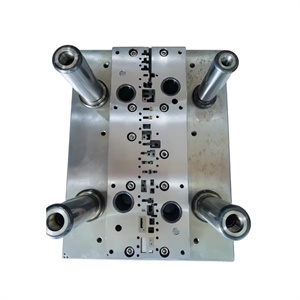The design of a progressive die stamping is a complex and delicate process that involves multiple considerations to ensure that the die can complete the stamping task efficiently and accurately. Here are some of the main steps and points about progressive die design:
1. Analyze the product part drawing: This is the first step of the design, and the main purpose is to determine whether the progressive die stamping can be used for processing. This usually depends on the material of the part, the geometry, and the desired batch size. For parts with large batch sizes and low dimensional accuracy requirements, progressive dies are often an ideal choice.
2. Determine the number of operations and arrange the sequence of operations: According to the part drawing, it is necessary to analyze all the processes required to complete the parts and arrange their order reasonably. For example, if punching and blanking are required, then it is common to punch the hole first and then blank.
3. Design nesting drawing: Nesting drawing is an important basis for designing progressive die stamping, which needs to ensure economic nesting, and consider the possibility of die manufacturing and the convenience of operation.
4. Determine the process position and step distance: This includes determining the distribution position of the concave model hole, the number of stations and the work content of each station. The step distance refers to the distance of each feeding, which needs to be reasonably selected without affecting the strength of the die.
5. Consider the principle of determining the number of steps: under the premise of not affecting the strength of the die, the fewer the steps, the better, because the fewer the number of steps, the smaller the cumulative error, and the higher the dimensional accuracy of the workpiece punched out.
6. Consider operation and safety: The design should take into account the convenience of operation, adjustment, installation, repair, handling and storage, as well as the safety of operators.
In addition, there are some specific design points to be aware of:
1. When arranging the sequence of punching and blanking processes, the punching process should be prioritized, which helps to ensure the direct feeding of the strip and improve the accuracy of the workpiece.
2. In the workpiece without a circular hole, in order to improve the accuracy of the feeding step, the process hole can be designed in the first step of the die as a guide positioning to improve the accuracy of the punch.
3. For different holes with high accuracy requirements for the same size datum, they should be arranged to be formed in the same step without affecting the strength of the die.
The design of progressive die stamping is a comprehensive process that takes into account multiple aspects such as materials, processes, operations, and safety. The design process requires careful analysis, precise calculations, and the help of advanced CAD/CAM and other auxiliary design tools to ensure that the final designed mold can meet the production needs and achieve the expected stamping results.
